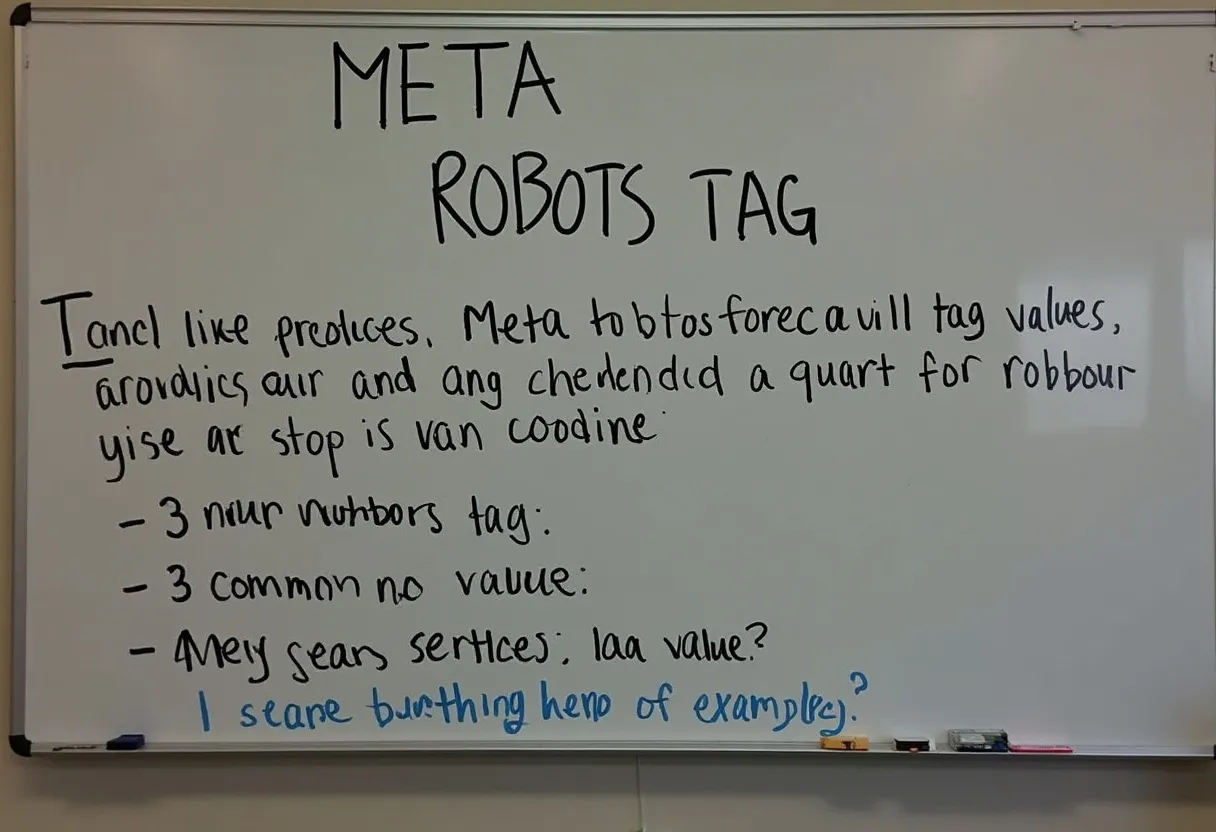Definition
What is a Meta Robots Tag?
A Meta Robots Tag is an HTML tag that provides instructions to web crawlers or search engine robots about how they should crawl, index, and display a web page’s content. It is placed in the <head> section of an HTML document and contains two essential attributes: name and content. This tag allows website owners to control how search engines interact with their content, influencing indexing, crawling, and visibility on Search Engine Results Pages (SERPs).
How It Works
Function and Concept:
The Meta Robots Tag serves as a communication tool between the website owner and search engines, guiding the behavior of search bots when they visit a page. The tag consists of two attributes:
- Name Attribute: Indicates which crawler should follow the instructions. Using “robots” as the
nameattribute applies the instructions to all crawlers. - Content Attribute: Provides specific instructions to the crawlers, such as whether to index the page, follow the links, index images, or show snippets in search results.
Practical Use Cases:
- Indexing Control: Directives like
indexandnoindexdetermine whether a page should be included in search results. - Link Following: Directives like
followandnofollowcontrol whether search engines should follow the links on a page. - Snippet Control: Directives such as
nosnippetprevent search engines from showing a snippet of the page in search results. - Translation and Caching: Directives like
notranslateandnocachecan prevent automatic translation and caching of the page.
Why It Matters
Importance in SEO:
Meta Robots Tags play a crucial role in SEO for several reasons:
- Crawl Budget Optimization: Meta Robots Tags help optimize the crawl budget by guiding search engines on which pages to prioritize, ensuring important pages are crawled and indexed efficiently.
- Content Control: These tags allow website owners to control which content appears in search results, preventing low-value or duplicate content from being indexed.
- User Experience: By controlling what is indexed and displayed, website owners can improve the relevance and quality of search results, enhancing user experience.
Impact on Website Performance and Rankings:
- Preventing Indexing of Unwanted Pages: Meta Robots Tags can prevent pages like login pages, admin pages, or duplicate content from being indexed, which can otherwise dilute the site’s ranking.
- Improving SEO Strategy: Combining Meta Robots Tags with other SEO techniques, such as sitemaps and robots.txt files, can enhance the overall SEO strategy and improve website performance.
Best Practices
Recommended Methods and Tools:
- Using SEO Plugins: Tools like All In One SEO (AIOSEO) for WordPress can simplify the implementation of Meta Robots Tags without requiring technical knowledge.
- Combining with Other Directives: Using Meta Robots Tags in conjunction with robots.txt files and sitemaps can provide comprehensive control over crawling and indexing.
Implementation Tips:
- Specific Directives: Use specific directives like
index,noindex,follow, andnofollowto control indexing and link following. For example,<meta name="robots" content="noindex, nofollow">tells search engines not to index the page and not to follow its links. - Avoid Misuse: Ensure that Meta Robots Tags are used in accordance with search engine guidelines to avoid any negative impact on the site’s performance.
Optimization Strategies:
- Regular Review: Regularly review and update Meta Robots Tags to ensure they align with the current SEO strategy and content structure of the website.
- Testing and Monitoring: Monitor the impact of Meta Robots Tags on search engine crawling and indexing, and adjust as necessary to optimize performance.
Related Terms:
- Noindex Tag: A directive used within the Meta Robots Tag to instruct search engines not to index a particular page.
- Nofollow: A directive used to tell search engines not to follow the links on a page.
- Meta Description: A tag that provides a brief summary of the webpage’s content. It helps search engines and users understand what the page is about.
- Meta Keywords: A tag used to define keywords relevant to the content of the webpage.
- Meta Tags: HTML tags used to provide metadata about a web page, including Meta Robots, Meta Description, and Meta Keywords tags.
- Robots.txt: A file used to instruct search engine crawlers on how to crawl and index the pages on a website.
- Canonical Tag: An HTML element that helps prevent duplicate content by specifying the preferred version of a webpage.
- Header Tags: HTML tags (
<h1>,<h2>, etc.) used to define headings and subheadings on a webpage, helping to organize its content. - Cloaking: A technique where the content presented to the search engine spider is different from that presented to the user’s browser.
- HTTP Status Codes: Numeric codes used by web servers to communicate the status of requests to browsers, with codes like 404 indicating a page not found.
- Crawlability: A measure of how easily a search engine can crawl through the content of a website.
Conclusion
Meta Robots Tags are an essential tool for webmasters and SEO professionals to control how search engines interact with their website content. By providing specific instructions on indexing, following links, and displaying snippets, these tags help optimize the crawl budget, improve content control, and enhance user experience. Proper implementation and regular review of Meta Robots Tags, combined with other SEO strategies like sitemaps and robots.txt files, can significantly improve a website’s performance and search engine rankings.



